Thank you for purchasing this Martha Pullen eBook.
Sign up for our newsletter and receive special offers, access to free content, and information on the latest new releases and must-have crafting resources! Plus, receive a coupon code to use on your first purchase from Store.MarthaPullen.com for signing up.
or visit us online to sign up at http://marthapullen.com/ebook-promo 2006 Carole Rodgers
Published by
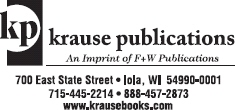
Our toll-free number to place an order or obtain a free catalog is (800) 258-0929. All rights reserved. No portion of this publication may be reproduced or transmitted in any form or by any means, electronic or mechanical, including photocopy, recording, or any information storage and retrieval system, without permission in writing from the publisher, except by a reviewer who may quote brief passages in a critical article or review to be printed in a magazine or newspaper, or electronically transmitted on radio, television, or the Internet. Library of Congress Catalog Number: 2005935066 ISBN-13: 978-0-89689-170-8
ISBN-10: 0-89689-170-4
eISBN 13: 978-1-4402-2083-8 Edited by Maria L. Turner
Designed by Emily Adler
Page layout by Marilyn McGrane Printed in the United States of America DEDICATION In loving memory of my mother, Iris (Lyn) Gardiner, who was the first to teach me to appreciate and enjoy the creative process.
ACKNOWLEDGMENTS I am truly grateful to the generous and innovative ladies who let me use photographs of their work in these pages. Their biographies, including which pieces they submitted, are located in the back of the book, page 128.
I also appreciate those who shared their knowledge of beading with me and through me with all of you, the readers. Thank you all so much. I wish to thank the following companies for their help as well: Beacon Adhesives Beadalon Jays Indian Arts Morning Light Emporium One-of-a-Kind Rock Shop Wild Things Beads
Lastly, I wish to thank the people at Krause Publications for making this book happen: editors Maria Turner and Sarah Herman, page designer Emily Adler, cover designer Marilyn McGrane, photographers Bob Best and Kris Kandler, and acquisitions editor Julie Stephani. CONTENTS 


 INTRODUCTION Looking back on my first trip to a bead store more than a decade ago, I remember being amazed at the endless possibilities that lay before me. There was such a confusion of light and color that I barely knew where to look first.
INTRODUCTION Looking back on my first trip to a bead store more than a decade ago, I remember being amazed at the endless possibilities that lay before me. There was such a confusion of light and color that I barely knew where to look first.
I wanted everything I saw. After much deliberation, I bought a few tubes of beads and proudly left with my prizes. I had no earthly idea what I was going to do with them so I put them away. It wasnt long before I was searching out the information I needed to be able to make jewelry with my beads. I bought books, took classes and picked the brains of people whose work I liked. Over the years, Ive managed to figure out how to do most everything I wanted to do in beading through one of these methods.
It sure would have been nice to have all the information in one place, though. With that in mind, I have geared this volume to the beginner. I have tried to write and illustrate it in such a way that it can be used as a quick reference. The projects are lessons in how to use the material, finding or technique discussed. Because it is impossible for every bead store to carry every bead, you probably will not be able to purchase the same beads Ive used. Ive tried to do the projects in a way that you can substitute beads of similar shapes or sizes.
Several variations are given for each technique because using different beads can result in an entirely different look. I hope you find this book a useful guide as you start on your beading adventure. 
 CHAPTER 1 GETTING STARTED This chapter covers the terminology and the basic materials you will need to begin beading. You will not use all of these items on every project, but if you do a lot of beading, you will eventually use most of them. Buy what you need as you need it, and add to your tools and materials as you can. When it comes to findings and stringing materials, it is always wise to purchase extra.
CHAPTER 1 GETTING STARTED This chapter covers the terminology and the basic materials you will need to begin beading. You will not use all of these items on every project, but if you do a lot of beading, you will eventually use most of them. Buy what you need as you need it, and add to your tools and materials as you can. When it comes to findings and stringing materials, it is always wise to purchase extra.
Mistakes are not uncommon when you are learning, and some things cannot be reused.  BEADS The most basic material needed when making beaded jewelry is, of course, beads. The variety of beads available is so large that its impossible to describe all of them. The following are the most common materials and processes presently used in beadmaking. From bone to precious stone, each has its own personality. BEAD MATERIALS
BEADS The most basic material needed when making beaded jewelry is, of course, beads. The variety of beads available is so large that its impossible to describe all of them. The following are the most common materials and processes presently used in beadmaking. From bone to precious stone, each has its own personality. BEAD MATERIALS 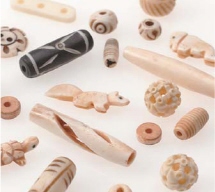 Bone: A popular bead material that can be carved, ground, painted or dyed.
Bone: A popular bead material that can be carved, ground, painted or dyed.
Bone beads are usually lightweight. 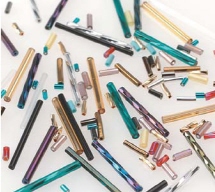 Bugle beads: Long, thin glass tube beads from 2mm to 30mm long in a variety of finishes. They can be straight, twisted or hex-cut.
Bugle beads: Long, thin glass tube beads from 2mm to 30mm long in a variety of finishes. They can be straight, twisted or hex-cut. 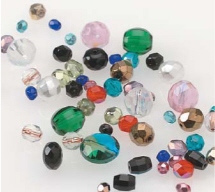 Faceted: Any bead that is ground with one or more flat surfaces. Faceting is most commonly done on glass, precious or semiprecious stone beads.
Faceted: Any bead that is ground with one or more flat surfaces. Faceting is most commonly done on glass, precious or semiprecious stone beads. 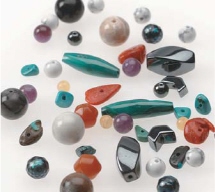 Gemstone and semiprecious: Semiprecious gemstones are carved or ground into beads.
Gemstone and semiprecious: Semiprecious gemstones are carved or ground into beads.
They come in a large variety of colors, sizes and shapes. 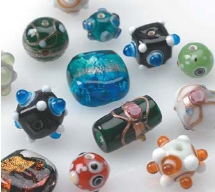 Lampworked or artisan: Lampworked beads are handmade by artisans one at a time through a process of wrapping molten glass around a mandrel in an open flame.
Lampworked or artisan: Lampworked beads are handmade by artisans one at a time through a process of wrapping molten glass around a mandrel in an open flame. 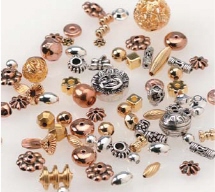 Metal: Beads can be made from a variety of different metals. Many used in jewelry are made from precious metals or are a base metal plated with precious metals. Like glass beads, they can be molded into a large variety of shapes. KEEP IN MIND THAT MOST BEADS ARE IMPORTED AND MANY COME FROM SMALL FACTORIES.
Metal: Beads can be made from a variety of different metals. Many used in jewelry are made from precious metals or are a base metal plated with precious metals. Like glass beads, they can be molded into a large variety of shapes. KEEP IN MIND THAT MOST BEADS ARE IMPORTED AND MANY COME FROM SMALL FACTORIES.

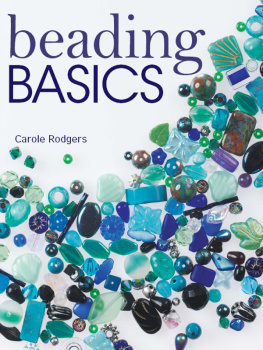
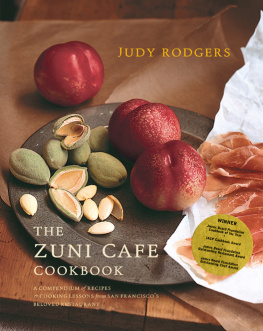


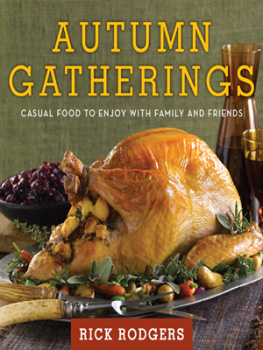
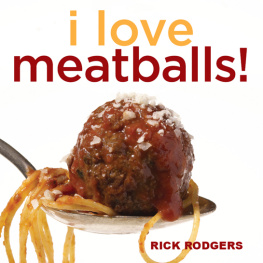
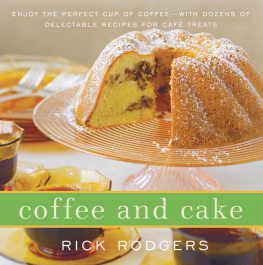

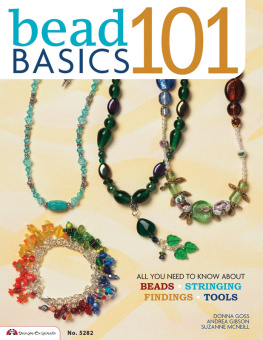
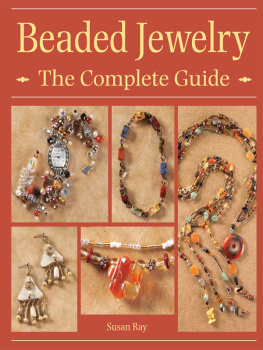


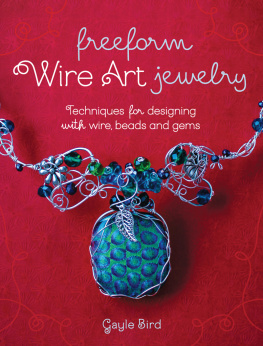
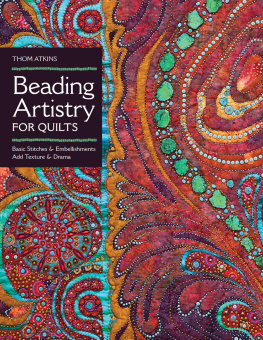
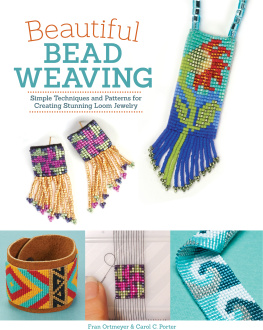
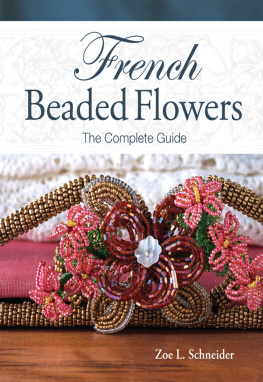

 Our toll-free number to place an order or obtain a free catalog is (800) 258-0929. All rights reserved. No portion of this publication may be reproduced or transmitted in any form or by any means, electronic or mechanical, including photocopy, recording, or any information storage and retrieval system, without permission in writing from the publisher, except by a reviewer who may quote brief passages in a critical article or review to be printed in a magazine or newspaper, or electronically transmitted on radio, television, or the Internet. Library of Congress Catalog Number: 2005935066 ISBN-13: 978-0-89689-170-8
Our toll-free number to place an order or obtain a free catalog is (800) 258-0929. All rights reserved. No portion of this publication may be reproduced or transmitted in any form or by any means, electronic or mechanical, including photocopy, recording, or any information storage and retrieval system, without permission in writing from the publisher, except by a reviewer who may quote brief passages in a critical article or review to be printed in a magazine or newspaper, or electronically transmitted on radio, television, or the Internet. Library of Congress Catalog Number: 2005935066 ISBN-13: 978-0-89689-170-8


 INTRODUCTION Looking back on my first trip to a bead store more than a decade ago, I remember being amazed at the endless possibilities that lay before me. There was such a confusion of light and color that I barely knew where to look first.
INTRODUCTION Looking back on my first trip to a bead store more than a decade ago, I remember being amazed at the endless possibilities that lay before me. There was such a confusion of light and color that I barely knew where to look first.
 CHAPTER 1 GETTING STARTED This chapter covers the terminology and the basic materials you will need to begin beading. You will not use all of these items on every project, but if you do a lot of beading, you will eventually use most of them. Buy what you need as you need it, and add to your tools and materials as you can. When it comes to findings and stringing materials, it is always wise to purchase extra.
CHAPTER 1 GETTING STARTED This chapter covers the terminology and the basic materials you will need to begin beading. You will not use all of these items on every project, but if you do a lot of beading, you will eventually use most of them. Buy what you need as you need it, and add to your tools and materials as you can. When it comes to findings and stringing materials, it is always wise to purchase extra. BEADS The most basic material needed when making beaded jewelry is, of course, beads. The variety of beads available is so large that its impossible to describe all of them. The following are the most common materials and processes presently used in beadmaking. From bone to precious stone, each has its own personality. BEAD MATERIALS
BEADS The most basic material needed when making beaded jewelry is, of course, beads. The variety of beads available is so large that its impossible to describe all of them. The following are the most common materials and processes presently used in beadmaking. From bone to precious stone, each has its own personality. BEAD MATERIALS  Bone: A popular bead material that can be carved, ground, painted or dyed.
Bone: A popular bead material that can be carved, ground, painted or dyed. Bugle beads: Long, thin glass tube beads from 2mm to 30mm long in a variety of finishes. They can be straight, twisted or hex-cut.
Bugle beads: Long, thin glass tube beads from 2mm to 30mm long in a variety of finishes. They can be straight, twisted or hex-cut.  Faceted: Any bead that is ground with one or more flat surfaces. Faceting is most commonly done on glass, precious or semiprecious stone beads.
Faceted: Any bead that is ground with one or more flat surfaces. Faceting is most commonly done on glass, precious or semiprecious stone beads.  Gemstone and semiprecious: Semiprecious gemstones are carved or ground into beads.
Gemstone and semiprecious: Semiprecious gemstones are carved or ground into beads. Lampworked or artisan: Lampworked beads are handmade by artisans one at a time through a process of wrapping molten glass around a mandrel in an open flame.
Lampworked or artisan: Lampworked beads are handmade by artisans one at a time through a process of wrapping molten glass around a mandrel in an open flame.  Metal: Beads can be made from a variety of different metals. Many used in jewelry are made from precious metals or are a base metal plated with precious metals. Like glass beads, they can be molded into a large variety of shapes. KEEP IN MIND THAT MOST BEADS ARE IMPORTED AND MANY COME FROM SMALL FACTORIES.
Metal: Beads can be made from a variety of different metals. Many used in jewelry are made from precious metals or are a base metal plated with precious metals. Like glass beads, they can be molded into a large variety of shapes. KEEP IN MIND THAT MOST BEADS ARE IMPORTED AND MANY COME FROM SMALL FACTORIES.